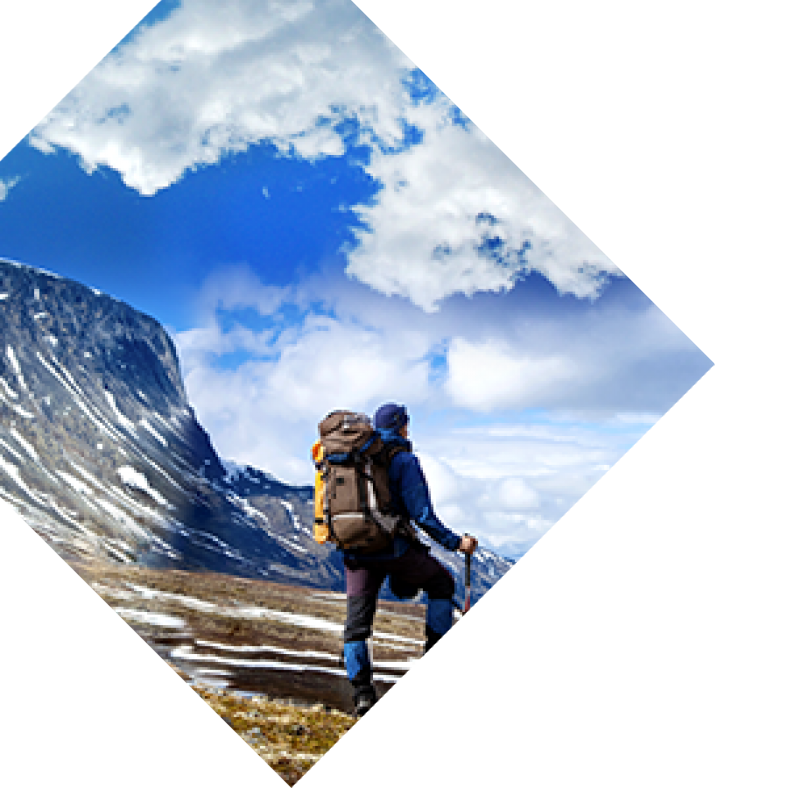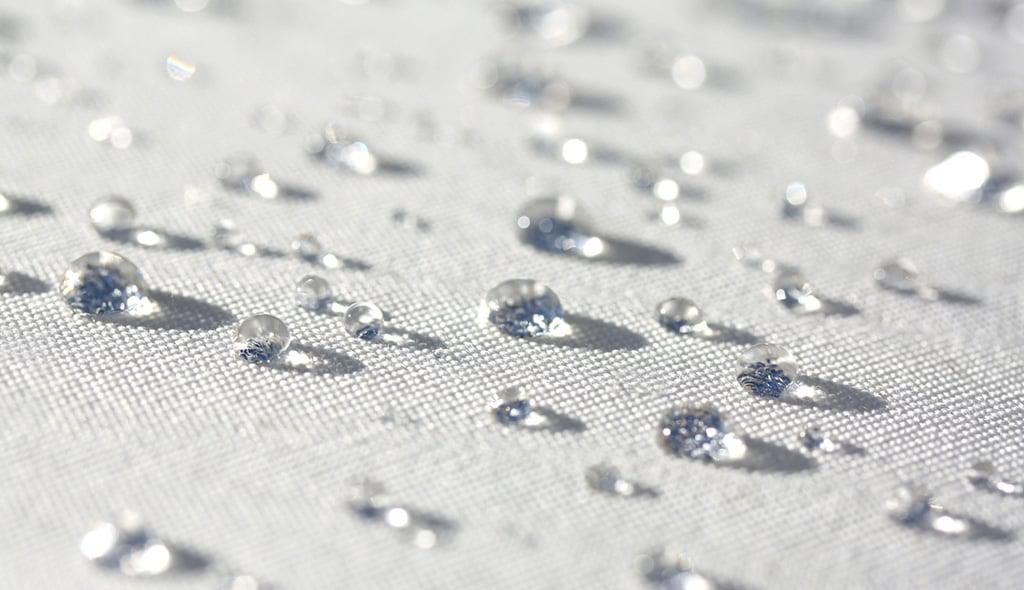 Imagine this: you’re planning an epic outdoor adventure and you’ve finally decided that you need to purchase a pair of waterproof pants. The tough part is done, right? You’ve made the decision? As it turns out, your shopping excursion isn’t that easy! Waterproof pants have a basic goal—to keep your legs dry—but the technology and features behind the pants are not so simple. If you head into the rain gear aisle at your local store, you’re likely to see phrases like waterproof-breathable and DWR. What, you mean my pants need to breathe?! Not all waterproof pants are created equal, and some of them may work better for some activities than others. Let’s take a look at your options and which waterproof pant you need for your next adventure.
Imagine this: you’re planning an epic outdoor adventure and you’ve finally decided that you need to purchase a pair of waterproof pants. The tough part is done, right? You’ve made the decision? As it turns out, your shopping excursion isn’t that easy! Waterproof pants have a basic goal—to keep your legs dry—but the technology and features behind the pants are not so simple. If you head into the rain gear aisle at your local store, you’re likely to see phrases like waterproof-breathable and DWR. What, you mean my pants need to breathe?! Not all waterproof pants are created equal, and some of them may work better for some activities than others. Let’s take a look at your options and which waterproof pant you need for your next adventure.
Waterproof breathable fabric
This technology initially hit the market in the late 1970s when outwear with a GORE-TEX laminate was first introduced. Since then, other brands have developed their own waterproof-breathable fabric but many still refer to this entire category as “GORE-TEX.” (Just like a flying disc is most commonly called a Frisbee!) No matter what you call it, waterproof breathable technology has continually grown since then, and it’s an important factor to consider when purchasing waterproof pants. You see, waterproof-breathable material does two main things:
- Wicks moisture away from your skin
- Offers an escape route for your body heat and sweat
The logic behind the technology is twofold: not only will your skin stay dry, but the waterproof-breathable fabric will allow further body moisture to escape so that you don’t end up feeling like you are hiking in a sweaty trash bag. No one likes hanging out in a pool of their own perspiration, you know? The construction of waterproof breathability sounds complex, but it really isn’t. Most waterproof-breathable pants come in one of three options:
- 2-layer construction
- 2.5-layer construction
- 3-layer construction
When you grab your waterproof pants, they may look like a single layer of fabric, but in reality, that thin material is multiple layers pressed together. The outer layer (that faces the elements) is commonly referred to as face fabric. This layer is meant to prevent water from beginning to absorb into the fabric, which would then cause the layer to soak and get heavier. The second, or middle, layer is where the GORE-TEX membrane exists. This is the actual waterproof-breathable layer, and it is always underneath the face layer, so you cannot see it. The third layer is where things get different in regards to waterproof pants. Both 2.5-layer and 3-layer pants have an innermost layer that acts to prevent your body sweat and oil from clogging the pores of the middle waterproof-breathable layer. After all, the technology is much less effective if all the breathable holes are clogged with your body grease! The difference between the two is that 3-layer pants tend to use polyurethane backing, which is very durable, whereas a 2.5-layer pant tends to use a very thin laminate that is essentially painted on. Because it is so thin, it is known as a half layer. On the other hand, 2-layer pants typically use a hanging layer of mesh that is not usually as effective or as lightweight as the inner layer on 2.5 and 3-layer pants.
DWR
Once you’re in the rain gear aisle, you’ll likely see the letters DWR. This stands for durable water repellent. This is a chemical treatment that is applied to the face fabric to keep it from absorbing water. As we mentioned above, we don’t want the outer layer to become saturated, since that allows the entire pant to get heavy and feel damp. The DWR coating resists the moisture from the outside and prevents this from happening. As an added bonus, DWR does not inhibit the breathability of the middle layer, so your pants will still allow all your body heat to escape. All waterproof pants feature DWR, as well as the majority of water-resistant outdoor fashion.
How to choose based on your activity
Now that you understand the major technological components behind waterproof pants, you can start shopping! Your choice will depend largely on your budget and chosen activity.
Hiking
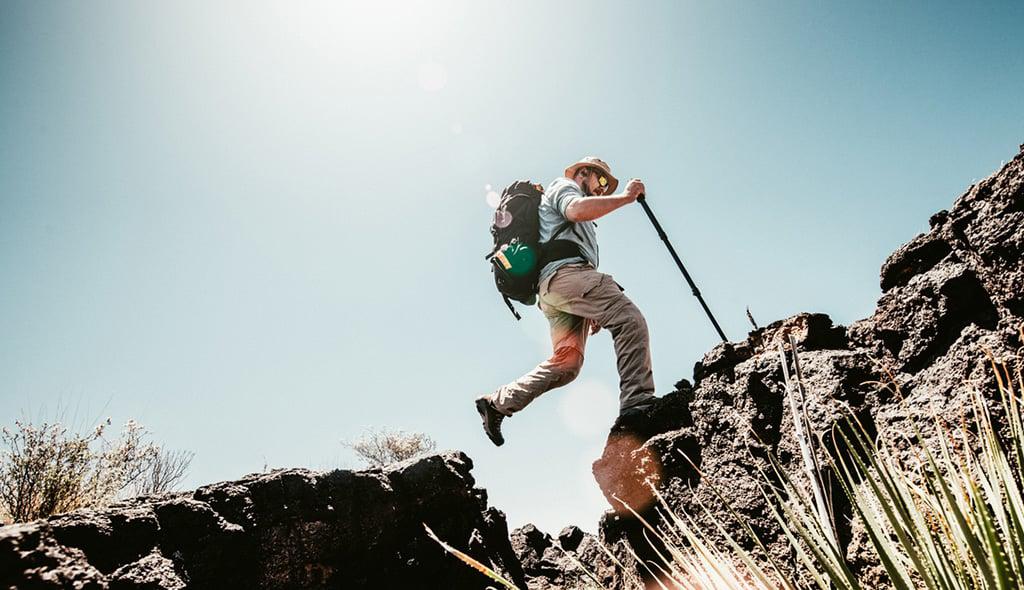 When you are searching for the best hiking clothes, you are going to want to find a pair of waterproof pants that are both lightweight and packable, as well as breathable. Due to the nature of your chosen activity, there is a good chance that a 2-layer pant won’t cut the mustard since it is both heavier and bulkier thanks to the hanging inner liner. It is more than likely that you will want to choose a 2.5 or 3-layer pant. Just be aware: 3-layer pants are pricier, so if you are not too sure on how often you will need it, it may be worth watching your budget. Recommended: Marmot Minimalist pant
When you are searching for the best hiking clothes, you are going to want to find a pair of waterproof pants that are both lightweight and packable, as well as breathable. Due to the nature of your chosen activity, there is a good chance that a 2-layer pant won’t cut the mustard since it is both heavier and bulkier thanks to the hanging inner liner. It is more than likely that you will want to choose a 2.5 or 3-layer pant. Just be aware: 3-layer pants are pricier, so if you are not too sure on how often you will need it, it may be worth watching your budget. Recommended: Marmot Minimalist pant
Backpacking
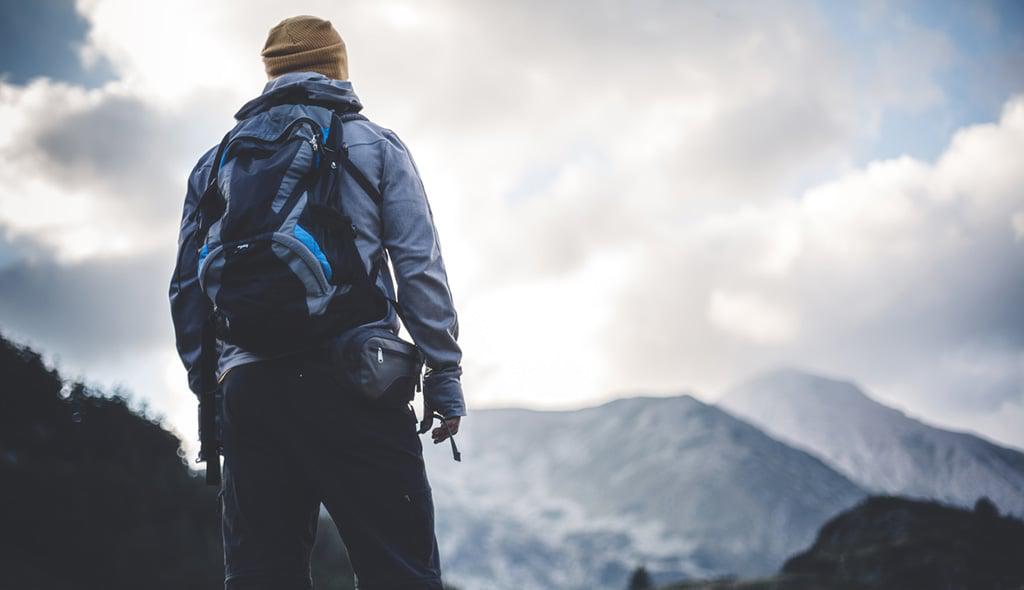 Choosing the best waterproof pants for backpacking is similar to hiking, but there are a couple of additional factors. First of all, consider your options. When day hiking, will you still be as excited about heading out for your day in the pouring rain? For some, the answer is yes, but for many, they’ll opt to move their hike to the next day when the sun is shining and birds are chirping. However, many backpackers don’t have that luxury, since rough weather can roll in at the drop of a dime. Backpackers still want to focus on the weight and packability of their pants, since there is finite space inside their backpack. However, features will likely become more important, too. Are your pants durable enough to withstand days on the trail? Will they sit comfortably underneath your hip belt or do they ride up on your waist? All of these factors need to be considered when shopping. If you have the budget, it may be worth looking at a pricier 3-layer pant. Sure, they cost more, but you’ll be getting a lightweight pant that packs down small, is durable, and may have a few bonus features to add to the livability factor. Of course, only you (and your bank account!) can make that decision. Recommended: Arc’teryx Beta SL pant
Choosing the best waterproof pants for backpacking is similar to hiking, but there are a couple of additional factors. First of all, consider your options. When day hiking, will you still be as excited about heading out for your day in the pouring rain? For some, the answer is yes, but for many, they’ll opt to move their hike to the next day when the sun is shining and birds are chirping. However, many backpackers don’t have that luxury, since rough weather can roll in at the drop of a dime. Backpackers still want to focus on the weight and packability of their pants, since there is finite space inside their backpack. However, features will likely become more important, too. Are your pants durable enough to withstand days on the trail? Will they sit comfortably underneath your hip belt or do they ride up on your waist? All of these factors need to be considered when shopping. If you have the budget, it may be worth looking at a pricier 3-layer pant. Sure, they cost more, but you’ll be getting a lightweight pant that packs down small, is durable, and may have a few bonus features to add to the livability factor. Of course, only you (and your bank account!) can make that decision. Recommended: Arc’teryx Beta SL pant
Fishing
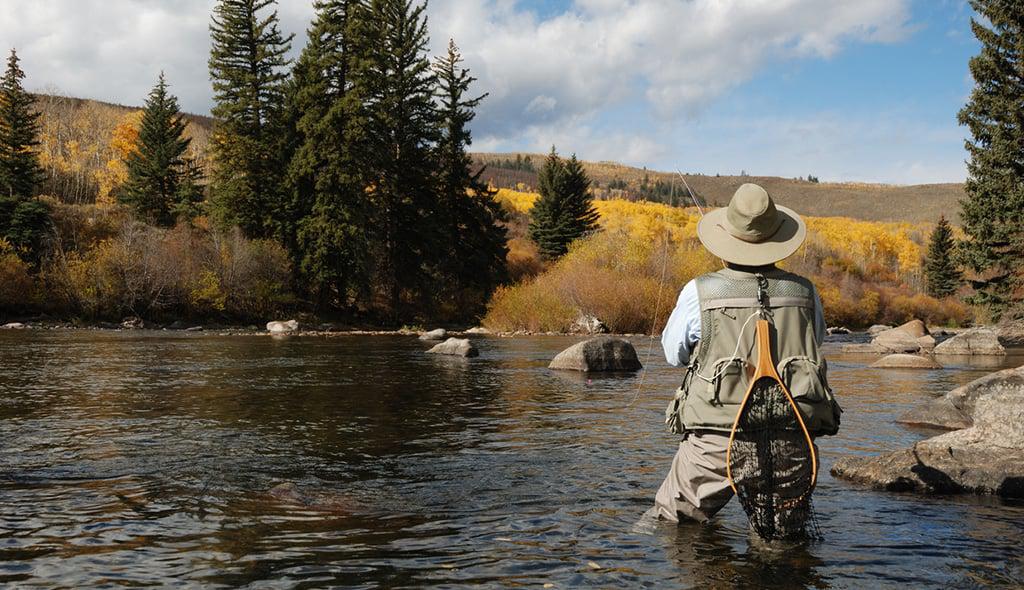 Many fishing enthusiasts will be standing on the bank of a river come rain or shine, so they need pants to keep up with them. This is an example of when a 2-layer pant may be the best option. If you’re just hiking from your car to the river, there is a good chance that a lightweight and packable pant isn’t necessary. Plus, your cardio intensity isn’t as high as it is with other sports, so the hanging liner isn’t a big deal since you don’t need as much breathability. Recommended: Simms Vapor Elite pant
Many fishing enthusiasts will be standing on the bank of a river come rain or shine, so they need pants to keep up with them. This is an example of when a 2-layer pant may be the best option. If you’re just hiking from your car to the river, there is a good chance that a lightweight and packable pant isn’t necessary. Plus, your cardio intensity isn’t as high as it is with other sports, so the hanging liner isn’t a big deal since you don’t need as much breathability. Recommended: Simms Vapor Elite pant
Skiing
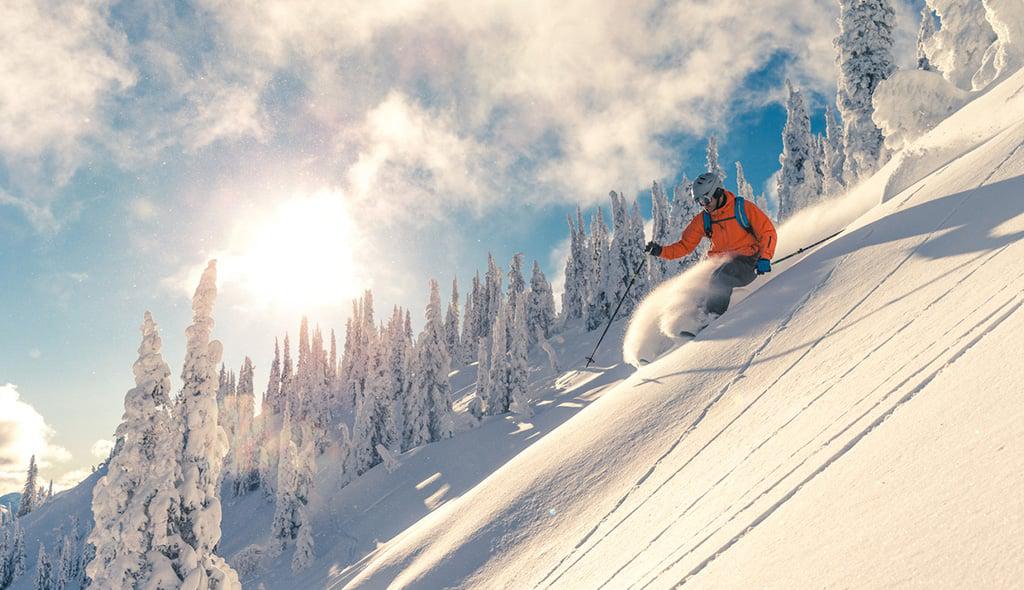 First, a question: do you ski in-bounds terrain that is largely served by lifts or do you tour in the backcountry, completely under your own manpower? The difference is huge, especially when it comes to deciding which pant will work best for you. If you prefer to stick to resorts, there is a good chance a 2.5-layer pant will do the trick for you. It will still be breathable so you don’t drown in your own body heat while lapping the hill. But you will have plenty of time to cool down on the chair lift or back at the lodge, so you don’t truly need the added features or lightweight nature of 3-layer pants. For backcountry skiers or snowshoers, however, I’d totally recommend a 3-layer pant. Touring and hiking uphill is hard, and the intensity leads to a lot of body heat and excess perspiration. In the winter, it’s crucial to make sure that you don’t end up wearing sweat-soaked clothing, since wet layers can lead to hypothermia. The breathability of your pants needs to be high, and a lightweight material will feel a heckuva lot better as you skin up to the top of that 12,000-foot peak. Recommended: Eider Spencer pants
First, a question: do you ski in-bounds terrain that is largely served by lifts or do you tour in the backcountry, completely under your own manpower? The difference is huge, especially when it comes to deciding which pant will work best for you. If you prefer to stick to resorts, there is a good chance a 2.5-layer pant will do the trick for you. It will still be breathable so you don’t drown in your own body heat while lapping the hill. But you will have plenty of time to cool down on the chair lift or back at the lodge, so you don’t truly need the added features or lightweight nature of 3-layer pants. For backcountry skiers or snowshoers, however, I’d totally recommend a 3-layer pant. Touring and hiking uphill is hard, and the intensity leads to a lot of body heat and excess perspiration. In the winter, it’s crucial to make sure that you don’t end up wearing sweat-soaked clothing, since wet layers can lead to hypothermia. The breathability of your pants needs to be high, and a lightweight material will feel a heckuva lot better as you skin up to the top of that 12,000-foot peak. Recommended: Eider Spencer pants

